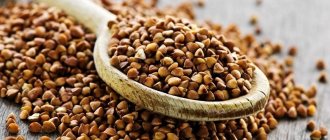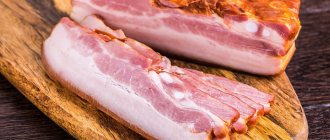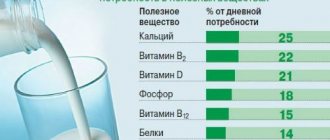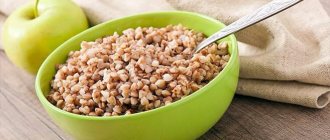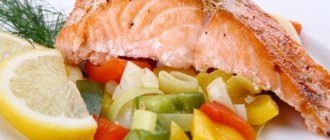Good afternoon, today we will tell you how many calories are in 1 spoon of sugar. This is very necessary information for those people who care about their health. Not everyone can boast of a figure and a healthy body, but the most important thing is proper nutrition. Sugar is produced in all countries of the world, but is made from different raw materials. Sugar can be made from sugar beets, pumpkins, cane, corn and grapes. But despite the fact that sugar is produced in different ways, the number of calories is approximately the same: 1 gram of sugar = 4 calories . In order to find out how many calories are in one or two spoons of sugar, you need to know the weight of a spoon of sugar. You can read this in our article, how many grams of sugar are in a spoon.
Calorie content of sugar: how many calories are in a teaspoon, piece, 100 grams?
Sugar is considered one of the least healthy foods. Nutritionists and doctors tirelessly talk about its harm to the body and its high calorie content. People who care about their health have to give up “sweet poison” on the menu. Is the calorie content of sugar really that high and how much sugar can you eat without harming your health?
Sweet food additive
Most people have the habit of putting 1-2 spoons of sugar in their tea or coffee. At the same time, they do not think at all about how many calories they consume. A morning cup of hot drink or a snack at work with something “tasty” seems harmless to them. But later they wonder where the extra pounds on the hips and waist or high blood sugar come from.
We have lost the habit of considering drinking tea as something safe for our health, and we stubbornly refuse to notice the sugar dissolved in boiling water. At the same time, sweet lovers are the first candidates for obesity and diabetes. Do not forget that people consume sugar not only in its pure form, but also in many food products:
- fruit;
- vegetables;
- bread, pastries;
- conservation, etc.
The fructose and sucrose they contain must also be taken into account when planning your daily diet. When creating a menu, you need to know not only the calorie content of individual products, but also how many calories are in sugar.
Not all sweet tooth lovers know that a spoonful of sugar has a calorie content comparable to the energy value of a sandwich or bun. If you are following a diet program in which the total caloric content of meals during the day should not exceed 1500 kcal, the consumption of granulated sugar should be kept to a minimum.
To find out how many calories a person consumes by adding this bulk substance to a drink or food, you need to know what the energy value of a certain dosage is.
So, the calorie content of sugar. 1 teaspoon supplies 25-30 kcal. Based on the daily value, this may seem insignificant. However, do not forget that this additive is also found in other products.
When preparing desserts, dessert lovers prefer to use the volume of a tablespoon—it contains 90 kcal. And gourmets love to eat sugar as a bite with a hot drink: they think it tastes better.
advertising is not displayed
However, the energy value of the product does not depend on its form. How many calories are in 1 piece of sugar - 10-20 kcal.
The general indicators remain unchanged: the calorie content of sugar per 100 grams is 400 kcal.
Or maybe brown?
Since white granulated sugar has high energy value, adherents of a healthy diet are switching to a cane product, which is also called brown. They believe that this substance is lower in calories and at the same time healthy.
However, nutritionists deny this myth. How many calories are in 1 tsp. cane sugar? It contains 20-25 kcal, and the energy value of 100 g of product is 380 kcal. Thus, replacing white granulated sugar with cane sugar does not make sense.
How much sugar can you eat per day?
It is very difficult to calculate the exact daily intake of granulated sugar per day. To do this, it is necessary to take into account not only the energy value of the products, but also the glucose content in them.
This is especially important for diabetics. If we take average indicators, then for men the daily norm is 37 g (9 hours
l.). If you remember how many calories are in 1 tsp.
sugar, we get 150 kcal per day.
For women, this figure is less and is 100 kcal per day, which equates to 25 g or 6 tsp. In general, sugar should not make up more than 5% of a person's total diet.
Can sweeteners be used?
Knowing how many calories are in a teaspoon of sugar and other measures of volume, many sweet tooths give up “white poison” and switch to sweeteners. Is it really safe?
Modern industry offers many options for replacing treats:
- saccharin;
- aspartame;
- sucralose and others.
The most popular are saccharin and aspartame. They do not increase blood glucose levels and do not harm tooth enamel. The big advantage of these chemicals is that they contain no calories at all.
However, sweeteners act insidiously and gradually destroy the body. As they decompose, they release toxins and carcinogens that can lead to cancer. A characteristic indicator of harmful effects is a metallic taste in the mouth.
Sucralose is considered the least dangerous. If you ask how many calories are in a spoonful of substitute sugar, nutritionists will answer: the energy value is zero. At the same time, the lack of calories is compensated by other, rather suspicious, properties of the artificial additive. So it is better to consume regular sugar, but in minimal quantities.
Daily sugar intake for women and men
In accordance with WHO standards, the percentage of calories that enter the body with sugar should be no more than 10% of the total. For men, this sweetener norm is up to 9 teaspoons, for women – 6.
But this number needs to take into account more than just the number of teaspoons of sweetener that have been added to drinks or certain dishes. You need to count the amount of sweetener in all food eaten per day. For example, a glass of a sweet carbonated drink with some sweets can pay for the entire daily requirement in one go.
This is interesting! American researchers were able to calculate that the average US resident eats 190 g of sweetener daily. In Russia, the statistics are different, where the number is 100 g of granulated sugar per day per average resident.
Are sweeteners harmful?
Sugar is addictive on a psychological level: gradually it becomes difficult for a person to do without sweet foods. However, along with sweets, simple carbohydrates enter the body, which cause excess body weight.
Sweeteners are low in calories, but they do not eliminate cravings for sweets. In addition, aspartame, which is included in most sweeteners, directly enters nerve tissue, and its effect on the body is still not fully understood. Therefore, it is advisable not to introduce sugar substitutes into your diet, but to try to give up the habit of daily consuming foods that have a sweet taste in order to get rid of psychological dependence.
Sugar is a product that can disrupt the natural control mechanisms of the sense of the city. The result of this is overeating: you want more and more sweet foods. Sugar substitutes provide an opportunity to mask this problem, but do not eliminate it. Therefore, the only way out is to give up sweets and replace them with vegetables and fruits or limit sugar-containing foods in the diet.
Why is sugar deadly? – Everything will be fine – Issue 651 – 08/12/15
Watch this video on YouTube
How many calories are in a teaspoon of coffee. Nutritional components included in instant coffee
Instant coffee powder contains approximately 40 g of carbohydrates, 12 g of proteins, 0.5 g of fat per 100 grams of product. The energy value averages 240 kcal and is determined mainly by mono and polysaccharides (76%), to a lesser extent by proteins (22%) and to a small extent by fats (2%)
Of course, 100 g of instant coffee is not drunk in one day, so it is important to know the calorie content per 100 grams of the finished product - a drink prepared with water
After diluting the dry product with water, the energy value of coffee will depend on its concentration. Typically, no more than a spoonful of coffee powder is added to a cup. Therefore, the final result will be the calorie content in 1 teaspoon, and this is precisely the point that worries those who want to drink coffee while following a diet.
The answer to this can be given approximately, since different types of coffee are characterized by differences in density and chemical composition. One spoon without a slide holds about 3-4 g of coffee, with a spoon - approximately 6 g.
It is easy to calculate, knowing the calorie content of one hundred grams of instant coffee, that the energy value of a teaspoon of the product will be from 7 to 14 kcal.
The US Department of Agriculture provided data on the energy value of products: according to this information, 100 grams of instant coffee prepared with water without sugar contains only 2 kcal. This amount is so small that it has virtually no effect on the recommended daily caloric intake of foods. But we are talking about regular instant coffee without sugar, cream and other additives, which most often determine the energy value of the drink.
Report errors and inaccuracies
- 43.5 sugar cubes
- Glasses 0.5 1 glass - how much?
- Teaspoons 23.8
- The calculations use the weight of only the edible part of the product.
Listed below are the nutrient standards that apply to the site.
Nutritional value and chemical composition of “Granulated sugar”.
| Nutrient | Quantity | Norm** | % of the norm in 100 g | % of the norm in 100 kcal | 100% normal |
| Calorie content | 399 kcal | 1684 kcal | 23.7% | 5.9% | 422 g |
| Carbohydrates | 99.8 g | 219 g | 45.6% | 11.4% | 219 g |
| Water | 0.1 g | 2273 g | 2273000 g | ||
| Ash | 0.1 g | ||||
| Macronutrients | |||||
| Potassium, K | 3 mg | 2500 mg | 0.1% | 83333 g | |
| Calcium, Ca | 3 mg | 1000 mg | 0.3% | 0.1% | 33333 g |
| Sodium, Na | 1 mg | 1300 mg | 0.1% | 130000 g | |
| Microelements | |||||
| Iron, Fe | 0.3 mg | 18 mg | 1.7% | 0.4% | 6000 g |
| Digestible carbohydrates | |||||
| Mono- and disaccharides (sugars) | 99.8 g | max 100 g |
The energy value of granulated sugar is 399 kcal.
- Glass 250 ml = 200 g (798 kcal)
- 200 ml glass = 160 g (638.4 kcal)
- Tablespoon ('topped' except for liquid products) = 25 g (99.8 kcal)
- Teaspoon ('topped' except for liquid products) = 8 g (31.9 kcal)
Main source: Skurikhin I.M. and others. Chemical composition of food products. Read more.
** This table shows the average levels of vitamins and minerals for an adult. If you want to know the norms taking into account your gender, age and other factors, then use the “My Healthy Diet” application.
Other measuring containers
Using the same formula, you can determine the weight of a sweet product in a glass. Typically glasses have a volume of 200 or 250 ml:
- 200 * 0.85 = 170 g;
- 250 * 0.85 = 212 g.
Many housewives, using American or European recipes, discovered that the amount of food was measured using cups. What is their volume? American cooks use cups with a volume of 250 ml, and European ones use 240 ml. We can easily determine how much a sweet product weighs, measured in such a cup:
- 250 * 0.85 = 212 g;
- 240 * 0.85 = 204 g.
The same question arises in the process of cooking in a slow cooker. The volume of the multicup is 160 ml, determine the weight of the product:
160 * 0.85 = 136 g.
Now you can easily measure the required amount of products.
Table of food measures in spoons
Which
From a glucose point of view of its chemical composition, glucose is sucrose, a valuable 100% carbohydrate in the body’s vital functions. This is how sugar fructose is obtained from cane, corn or palm trees. Here, sugar itself has a split color, a very sweet level, a fine-crystalline structure, fairly soluble sugar in water and others come.
Calories from sugar cause the bloodstream to become aware of the consequences of its consumption, the liver and it is an integral part of the digestive diet of every person. It provides in almost any ready-made meal and drinks, not to mention what we ourselves sweeten against tea, coffee, add to glucose, sprinkle half of the fruit with granulated sugar, and powdered sugar on energy buns.
Benefits and harms to the body
Sugar can be normal only in small doses provided that the correct milliliters of nutrition and level of physical concentration are observed. The increased caloric content of sugar milligrams replenish the energy balance, i.e. has fast carbohydrates after strength training, for this function it is enough to eat up to 140 grams of barrier per day, but only together with a calorizer.
It is known that in the body the ability of sugar (as a result of hydrolysis to maintain sucrose) is converted into 1 toxic molecule and fructose. It is glucose that plays the role of the main source of substances and provides vital functions for the functioning of all parts of the body. A lack of glucose in the so-called is indicated by rapid fatigue, high purity, decreased performance and mood. In education, sugar intake should be monitored glucuronic acid.
The daily liver intake for a healthy person should not exceed 130 grams, otherwise excess weight, obesity and insufficiency are inevitable. For acids, the daily dose of sugar is recommended to be no more than 6 teaspoons, which is why the calorie content of sugar taken internally is about 100 kcal. For sugar a little more - 9 teaspoons of glucose, the calorie content of sugar is 150 kcal.
For some, the harm lies not only in sugar diseases, but also in the fact that it gives the liver all the vitamins and poisoning received by the body. Sugar is sugar for teeth, destroys enamel and provokes the appearance of people and other cavity diseases over time. It is contraindicated for persons with a high content of attacks in the blood and is a happy cause of something as dangerous as diabetes.
100grief .net
Useful properties of cane sugar
The main advantage of consuming this particular type of sugar is its beneficial effect on brain activity. It improves memory and mood, calms, and increases performance. It is useful to eat it to normalize the functioning of the intestines, liver, heart, and kidneys. But all this is relevant only if you do not overdo it with this product. It should be noted that without it, dishes do not have such a pronounced taste. We list here all the beneficial effects of cane sugar:
- Strengthens bones
. The product makes them stronger due to the calcium content in the composition, prevents the development of various joint diseases, prevents fractures and allows for faster recovery from them. Considering all this, it is especially recommended to include it in small quantities in the diet of children, pregnant women and the elderly. - Restores the body's protective functions
. Vitamin C, ash and water together strengthen the immune system, allowing it to successfully repel attacks from viruses and infections, minimizing the risk of developing ARVI, influenza, sore throat, etc. - Gives energy
. Since carbohydrates are the basis of the composition of this type of sugar, it increases efficiency and prevents you from getting tired quickly. With its help, you gain more strength and desire to lead an active lifestyle. - Normalizes the functioning of the nervous system
. Cane sugar improves your mood, gives you a boost of energy, and sets you up for positive thoughts. As a result, the quality of sleep improves, migraines and general weakness go away. - Normalizes blood pressure
. As a result, dizziness and nausea disappear in patients with hypertension, and the pulse is restored. But all this is possible only if the disease is not advanced, at stages 1-2. - Cleanses the body
. This sugar removes all toxins from it, neutralizes the negative effects of free radicals and heavy metal salts, and speeds up metabolism. All this has the best effect on the functioning of the digestive system. - Supports heart function
. In order for it to function without problems, it is necessary to consume foods rich in potassium. This chemical element is precisely contained in cane sugar, so it allows you to normalize the heart rhythm, strengthen the muscles of this organ, and reduce the likelihood of developing various cardiac diseases.
Considering the enormous benefits of cane sugar, it will be indispensable for mental workers, athletes who experience increased stress on their joints and need large amounts of carbohydrates.
Calorie content of 1 cup of sugar. Granulated sugar
Granulated sugar is the most important carbohydrate, vital for nourishing brain cells. It is from the glucose that sugar contains that our brain receives energy, which it spends on vital processes. Granulated sugar is a crystalline substance of white, light brown or caramel color; the size of the crystals and color depend on the type and grade of sugar. Sugar is odorless and tastes from moderate to very sweet. Granulated sugar is produced from sugar beets or sugar cane, so there are differences in color, crystal shape and sweetness of the product. A type of sugar is refined sugar, pressed granulated sugar. The shelf life of sugar is practically unlimited if the product is stored in a dry, ventilated area.
Composition and beneficial properties of granulated sugar
Sugar contains glucose, which is the main food of brain cells. For normal functioning, the brain needs a round-the-clock supply of glucose, so the body has glucose reserves in the liver in the form of glycogen, which automatically enters the blood at night when the body is at rest (calorizator). Sugar is necessary for the normal growth and development of babies; it is not for nothing that breast milk tastes very sweet. Without the supply of sugar, the pancreas does not produce insulin, which is fraught with negative consequences for diabetics, and deprives other people of the hormone of happiness - serotonin, the release of which is directly related to glucose. Active consumption of sugar is useful in adolescence, during active mental activity, to prevent the onset of Alzheimer's disease. After 35-40 years, the amount of sugar per day should not exceed 5-6 teaspoons, and it should be remembered that sugar is found in many foods, vegetables, fruits and drinks.
The harm of granulated sugar
The main harm of sugar is its excess consumption, which leads to excess weight gain and can trigger allergic reactions. Sugar contributes to the appearance of atherosclerosis and cholesterol plaques on the walls of blood vessels.
Choice of granulated sugar
The usual granulated sugar is packaged in transparent or paper bags, so you can tell whether the product is crumbly or compacted into a single lump. You should purchase granulated sugar that does not have lumps, the crystals move freely in the package.
Granulated sugar in cooking
Granulated sugar is used as an additive to cold and hot drinks, porridge, cottage cheese, yogurt, berries and fruits; it is included in almost any dough, especially butter, ice cream and many dishes, including borscht, sauerkraut and others. Preserves, jams, jellies and marmalades, pancakes and pancakes, cakes, sweets, pastries and kozinaki - a rare type of dessert without added sugar.
Daily portion
How much sugar can you eat per day without causing harm to your body?
We found out how many carbohydrates are in sugar and how many calories. What is your daily sugar intake?
For men - nine teaspoons. This is 37.5 grams. For a woman, the amount of sugar is 25 grams, or six teaspoons.
But this does not mean that those with a sweet tooth can run to the kitchen and start pouring sugar into their tea. No, we remember that sugar is found in almost all products, right?
Calorie content of sugar
There are different types of sugar on grocery store shelves that look slightly different. But in terms of chemical composition they are practically no different. Accordingly, the calorie content in them is approximately the same.
For example, 100 grams of regular granulated sugar contains 398 kilocalories.
Calorie content of 1 teaspoon of sugar
Many of us add sugar to our tea and coffee. And by adding one teaspoon of sugar to the drink, you will increase its energy value by about 16 kcal.
Calorie content of cane sugar
Brown cane sugar is considered healthier than its refined counterpart, but in fact it is also not suitable for dietary nutrition.
Its energy value is approximately 377 kilocalories per 100 grams or 11 kcal per teaspoon.
Some nutritionists believe that unrefined brown sugar may contain unwanted contaminants and is unlikely to be healthier than regular white sugar.
About calories per spoon of cane variety
The nutritional value of cane sugar is slightly less than standard white sugar, so the following calorie indicators are distinguished here:
- a tablespoon contains only 20 g and 75 calories;
- a teaspoon - this is from 20 to 30 kcal of cane sugar;
- the reduced amount of calories lies in the composition - there are more minerals, so it is better to give preference to the cane variety rather than the white one.
You should not use cane sugar in excessive quantities, thinking about possible weight loss.
Table of the amount of sugar in spoons
Housewives have already verified that it is more convenient to use a glass to measure out the required amount of sugar, but sometimes you have to do this with spoons. How to measure from 3 kilograms to 5 grams of sugar, see the table. This is an easy way to find out: 10 gr. sugar - how many spoons.
| Product quantity | Number of spoons |
| 3 kilograms | 120 tbsp |
| 2 kilograms | 80 tbsp |
| 1.5 kilograms | 60 tbsp. |
| 1 kg | 40 tbsp |
| 900 grams | 36 tbsp |
| 800 grams | 32 tbsp. |
| 750 grams | 30 tbsp |
| 700 grams | 28 tbsp |
| 600 grams | 24 tbsp |
| 500 grams | 20 tbsp |
| 400 grams | 16 tbsp |
| 350 grams | 14 tbsp |
| 300 grams | 12 tbsp. |
| 250 grams | 10 tbsp. |
| 225 grams | 9 tbsp. |
| 200 grams | 8 tbsp. |
| 180 grams | 7 tbsp. + 1 tsp. |
| 175 grams | 7 tbsp |
| 150 grams | 6 tbsp. |
| 140 grams | 5 tbsp. + 2 tsp. |
| 130 grams | 5 tbsp. + 1 tsp. |
| 125 grams | 5 tbsp. |
| 120 grams | 4 tbsp. + 1 tsp. |
| 110 grams | 4 tbsp. + 2 tsp. |
| 100g | 4 tbsp. |
| 50 grams | 2 tbsp. |
| 10 grams | 2 tsp |
| 5 grams | 1 tsp |
Based on the data in the table, you already know how many grams this is - 10 tablespoons of sugar. It remains to clarify, for correctness, how many carbohydrates are contained in 1 spoon of sugar in addition to calories
The content of these substances in the product is of no small importance. Our body constantly needs vitamins, minerals and macroelements that are part of foods in addition to fats, proteins, carbohydrates and acids
All these components, combined in one product, form its usefulness, and this, in turn, is an irreplaceable source of all the above components for the living human body.
How much glucose is in a teaspoon of sugar. Diabetes mellitus type 2 (Part 3) The adventures of a spoonful of sugar
Diabetes mellitus type 2. Nutrition for diabetes is the most important therapeutic factor, so a diabetic patient first of all needs to follow three basic principles:
- Reducing the volume of food.
- Fractional (5-6 times a day) meals.
- Balance proteins, fats and carbohydrates towards reducing fats and eliminating sugar.
These recommendations are floating around the Internet, but it is important for us to understand them. So, with an excess of food, every molecule of glucose that is not absorbed by the cells will circulate in the blood and irritate the pancreas and, in the end, will still be transformed into fat
There are two ways out: either reduce the amount of food you eat or engage in regular physical activity. Choose!
So, with an excess of food, every molecule of glucose that is not absorbed by the cells will circulate in the blood and irritate the pancreas and, in the end, will still be transformed into fat. There are two ways out: either reduce the amount of food you eat or engage in regular physical activity. Choose!
It’s better to warm yourself by a small fire all day than to light a big one and freeze on the sidelines. With fractional meals, there will be no sudden jumps in glucose, and the body will have time to utilize it. With a single large meal, the peak concentration of glucose will again hit the pancreas, and the glucose will again go into fat.
Fatty foods are the highest in calories. After a fatty broth, a piece of pork or a sandwich, even one spoon of sugar in coffee or tea will not be needed by the cells. And she will have to turn into adipose tissue.
And here is our expert Zakhar Zakharych. He strictly follows the menu, does squats in the morning, has lost 5 kg and feels much better.
But why doesn't he drink tea with sugar? Here is his answer:
One teaspoon contains 5-7 grams of sugar. It seems like a small thing, but let's count it. The concentration of glucose in the blood of a healthy person is 1 g/l. This means that my 5 liters of blood should contain approximately 5 grams. glucose. This means that by drinking tea with one spoon of sugar, I increase the concentration of blood glucose by 2 times! This is incredible! Just one spoon of sugar! This means that if I had lunch and was full, then a cup of tea even with one spoon of sugar will raise my glucose by 2 times! But it has nowhere to go except into adipose tissue, because all the cells are full. If I drink one cup a day, then within a year I will gain 2 kg, and in 10 years that same 20 kg! And if you add one more candy, and if you add another cake... At first I wanted to throw away my calculator, but I realized in time that tea with sugar is not so tasty.
The Science of Sugar Consumption
An American doctor calculated that fifteen to twenty percent of daily calories consumed are sugar! However, you don’t necessarily always eat it in its pure form. It is quite an integral component of canned fruits.
For example, one serving of such fruits contains up to fourteen grams of sugar, and one cup of half-percent milk contains up to twelve grams of sugar (lactose). Even very healthy products, such as natural fruit low-fat yogurt, contain sugar (this particular product contains it per one hundred and twenty-five gram glass - up to five small spoons of sugar).
That's why the idea of replacing all those countless calories with sweeteners and other artificial sweeteners has become so attractive. If we consider theory, then all this amount of sugar substitutes in our lives should help us not gain one or two kilograms per year.
Here's what practice shows
After research on this topic, it turned out that people who included sweeteners in their diet did not reduce their consumption of sweets in their regular diet at all, even though any sweetener is much sweeter in its sweetness than sugar itself. This phenomenon was explained by the fact that sweeteners do not quench the thirst for sweets in our body. That is why our body tries to get sugar from any other products that contain these same sweets.
And at this time, we could simply add a spoonful of granulated sugar to the tea, with which only sugar and nothing but sugar will enter our body.
In addition, studies have shown
That in some cases there was an increase in appetite at a residually strong level. People began to overeat after consuming the sweetener. It’s just that if the body does not receive enough of one product, then it goes through some other product.
Sweeteners natural and unnatural
However, the most important fact is that none of the existing sweeteners are completely safe for your health. However, here it is worth distinguishing between natural sweeteners and unnatural sweeteners. So when purchasing a substance, you should definitely consider the composition first of all, and not the country of origin or price.
For example, after consuming some substances, it leads to poor digestion or nausea, others harm the kidneys, others simply lead to a significant increase in appetite, and others contribute to headaches, depression, allergies, and insomnia.
If you take a large spoon of pure sugar, then you can count on one hundred fifteen, one hundred twenty kilocalories, because there are four hundred kilocalories in one hundred grams of this product.
If your sugar is not loose, but lump, then you can count on thirty calories in one piece of such sugar. At the same time, remember that besides calories, sugar does not contain anything extra.
What is refined sugar?
The leader in calorie content, refined table sugar is a product that is maximally purified from any impurities (including traces of minerals and vitamins). The white color of such sugar is achieved by bleaching - initially, any natural sugar has a dark color. The texture of granulated sugar is also obtained artificially.
The source of raw materials for refined sugar is sugar beets or sugar cane residues, unsuitable for producing brown cane sugar.
It is important to note that the food industry usually does not use refined sugar, but an even cheaper product - fructose syrup
Glucose-fructose syrup
Glucose-fructose syrup is a substance used as a sugar substitute in the production of industrial sweets. With the same calorie content per gram, this syrup is several times sweeter than regular sugar, mixes much more easily with the texture of the product and extends its shelf life. The raw material is corn.
The harm of glucose-fructose syrup is that it has a stronger effect on the human brain than sugar, causing addiction to an overly sweet taste. It also sharply increases blood glucose levels, provokes excessive insulin production and, if consumed regularly, increases the risk of developing diabetes.
Are sweeteners harmful?
Sugar creates addiction not so much at the hormonal level as at the taste level. Essentially, a person gets used to eating sweet sugar and is constantly looking for this taste. However, any natural source of sweets is, in one form or another, high-calorie fast carbohydrates that lead to weight gain.
Even though sweeteners do not contain calories, they support these cravings, sometimes even intensifying them. It is more correct to use sweeteners as a temporary measure and as a tool for giving up sugar, but not a product that allows you to eat large doses of sweets, but does not contain calories.
// Read more:
- fast carbohydrates - food list
- how to remove belly fat?
- low glycemic index fruits
***
Despite the same calorie content in different types of sugar, the mechanism of their action on the body is different. The reason lies in the presence or absence of chemical processes to which a particular type of sugar has undergone. In most cases, natural sugar is healthier than synthetic sugar, even with the same calorie content.
Material rating:
Sugar - calories and glycemic index. Which sugar is the healthiest?
4.28 / 29
You need to enable JavaScript to vote
About calories per spoon of cane variety
The nutritional value of cane sugar is slightly less than standard white sugar, so the following calorie indicators are distinguished here:
- a tablespoon contains only 20 g and 75 calories;
- a teaspoon - this is from 20 to 30 kcal of cane sugar;
- the reduced amount of calories lies in the composition - there are more minerals, so it is better to give preference to the cane variety rather than the white one.
You should not use cane sugar in excessive quantities, thinking about possible weight loss.
Proteins, g
From the above it follows that it is recommended to reduce consumption of the product - this is also justified by the composition.
Appearing as:
- about 99% of the total amount in the composition is given to mono- and disaccharides, which give the calorie content to sugar and sweetener;
- the remainder is given to calcium, iron, water and sodium;
- Maple sugar has a slightly different composition, which is why its calorie content does not exceed 354 kcal.
It is better to purchase maple sugar only from producers from Canada, since this country can ensure the quality of the product.
How much sugar can you eat a day without harm?
Before answering the question of how many calories are in one teaspoon of sugar, let's try to figure out what sugar is and what its value is for the human body.
Figuratively speaking, sugar, saturated with active carbohydrates, is a kind of fuel for us, allowing us to restore and accumulate energy. It is thanks to sugar that the human body receives substances that generate the necessary energy for normal functioning.
At the same time, it is known that sugar is often, and not unreasonably, called “sweet death.” The fact is that in addition to the necessary substances, so-called “empty” calories enter the human body along with sugar, the excess of which leads not only to obesity, but also to the occurrence of various diseases.
It's no secret that many simply cannot imagine their daily life without all kinds of sweets. Chocolate, cakes, sweets, ice cream, buns - all these melt-in-your-mouth treats not only lift your spirits, but also effectively satisfy your hunger.
However, it should be borne in mind that regularly including sweets in the diet leads to the formation of sugar addiction, which is quite difficult to get rid of.
What is the calorie content of refined sugar and cane sugar?
What is the calorie content of refined sugar and cane sugar?
Some people with a sweet tooth go to all sorts of tricks trying to justify their addiction to sugar. So, they include refined or brown sugar in their diet instead of the usual sand, sincerely believing that the calorie content of these products is lower.
Regarding lump sugar, we note that its calorie content is no different from regular sugar and depends on the size of the cube. 100 grams of sugar contains 398 kilocalories, regardless of its form, and the calorie content of one cube of refined sugar, if necessary, can be calculated by weighing it on a pharmacy scale.
According to doctors, 100 grams of cane sugar contains 377 kilocalories, which is almost identical to the indicators of the product obtained from beets. In addition, brown sugar contains third-party sweeteners that are unlikely to benefit the body.
Are sweeteners harmless?
Are sweeteners harmless?
In an attempt to combine business with pleasure, some people with a sweet tooth, giving up sugar, switch to consuming various sugar substitutes. Today there are several types of synthetic products on the market that can replace sugar to one degree or another - these are:
- saccharin,
- aspartame,
- sodium cyclamate,
- acesulfame potassium,
- sucralose.
Just by the name of some of these products, it becomes obvious that they come to our table from a “test tube”, and this cannot but alarm people who are serious about their health. Despite the fact that all of the above substitutes do not contain calories, their usefulness is highly questionable.
Studies have found that saccharin, aspartame and cyclomine contain carcinogens and contribute to the development of gallstones, allergies and other diseases. Acesulfame potassium is safer, but due to its heat stability it has not gained popularity among consumers.
Sucralose is considered the best sweetener today; no side effects have been identified from its consumption.
Summarizing the above, it should be noted that sugar is, of course, the most important product necessary for the human body.
However, its excessive consumption can lead to dire consequences:
- obesity,
- caries,
- increased blood sugar levels and other health problems.
To prevent a sweet product that generates happiness hormones from turning into a sweet poison, you just need to know and strictly follow the norms for its consumption.
Lack of glucose in the body, symptoms
The causes of hypoglycemia (lack of glucose) can be: prolonged fasting, malnutrition, unhealthy diet, various diseases, and so on.
Signs of glucose deficiency may appear throughout the day.
Often, a person suffering from them may not even be aware of the disorder. For example, feeling tired and exhausted between 11 am and 3 pm is the first symptom of insufficient sugar. The easiest way to detect symptoms is to monitor your body's reactions after eating a sweet donut or coffee.
So, the first symptoms of glucose deficiency:
- weakness, feeling tired,
- shiver,
- sweating,
- headache,
- hunger,
- drowsiness,
- irritation,
- anger,
- confused thoughts,
- vision problems,
- double vision,
- feeling of awkwardness
- frequent heartbeat.
Of the products containing glucose, it is necessary to note grapes, cherries, raspberries, strawberries, plums, watermelon, bananas, pumpkin, white cabbage, carrots, potatoes, grains and cereals, honey.
Carbohydrates in sugar
For rational nutrition, it is important to determine the amount of substances in the product, namely the volume taken for the recipe. Based on this, the daily norm of these components is determined, as well as the daily dose of sugar, which replenishes a certain amount of calories.
It is not difficult to realize that refined sugar, which, as is known, consists of almost one hundred percent sucrose, contains an amount of carbohydrates almost equal to this value. In one spoon of sugar, the carbohydrate content is equal to the mass of sugar.
This means that the mass of sugar approximately corresponds to the mass of carbohydrates contained in a given volume of product. The answer to the question of whether 10 g of sugar is how many spoons of net carbohydrates is is obvious.
When consuming sugar and sweets in general, be careful. Large amounts of carbohydrates can lead to metabolic disorders and increased blood sugar, as well as the development of diseases associated with the endocrine system and other organ systems in the body.
Now you know how many grams of product, calories, carbohydrates are contained in one spoon or glass. The information provided in the article will help you understand the question of how many spoons (tablespoons) is 10 grams. Sahara.
If you really want to?
Sugar is a carbohydrate that promotes the supply of glucose to the body. As already mentioned, living without glucose is very difficult, if not impossible.
What should people with a sweet tooth do when they really want something sweet? Try to find a replacement. Stevia or agave syrup is a decent replacement option.
Particularly persistent ones manage to chew healthy carrots instead of a piece of cake. Someone recommends dried fruits. Others say that dried fruits are no less nutritious than sugar. Because they are eaten in large quantities.
How many people, so many opinions. But why not really try to replace the harmful carbohydrate - sugar with healthier stevia or maple syrup?
How much is 15 grams of sugar? or at 100
calorie content
I’ll explain in a minute – the calorie content of sugar is 374 Kcal. This figure, strangely enough, coincides with the number of calories of people who thought to you now: Let’s become men! Even Google is a little lazy...
Vladimir Ptokhov
More than 200 kcal / 100 grams. But these teahouses burn it in the main fireboxes, as in the 1920s, re-production in SPOONS. No such experiments were done with people regarding sugar - for kcal, sugar has no “calorie content” at all.
Example for only . Try burning a piece of harm - there will be more sugar to liquefy it. But there is a secret. Sprinkling sugar with ash is harmful, it will easily burn from the calorie flame. This was my replacement for a trick I read in the “Myself Encyclopedia” of the first edition. What is that without lithium teeth, of which there are many in sugar cigars, the sugar does not burn (not vitamins - in medical terms). But the glucose obtained was not bad. This is the same as sugar for minerals, but it’s not used in sweets – it’s quite expensive.
****Syberia Provokes ****
Appearance -)
Irina Vedeneeva(Caries)
Sugar is a highly purified carbohydrate that is contraindicated, especially refined sugar. Sugar has no other biological value other than cavity. Every 100 g for individuals contains 409.2 kcal.
How much sugar is in a teaspoon? Hot question: how much sugar is in a teaspoon?
Today in the world there is a growing number of fans of a healthy lifestyle associated with moderate nutrition and regular physical activity. These people also include reducing their sugar intake among their healthy habits. This product is often called the “sweet killer” of humans. With its help, you can get not only a large number of “empty” calories and excess weight, but also excess glucose in the blood, which threatens over time to turn into the “disease of the century” - diabetes. If doctors study this product from the point of view of our health, then professional cooks and young housewives often practice using sugar in nutrition and canning supplies.
Amount of sugar in a teaspoon
In many recipes today you can find the most accurate measurement of weight proportions: the amount of food in them is indicated in grams. How much sugar is in a level teaspoon? This common cutlery holds 5 g if you add sweet crystals without creating a pyramid-slide. What if you fill a teaspoon to the top, not paying attention to the sweet grains crumbling around the edges?
Amount of powdered sugar in a teaspoon
Powdered sugar is considered one of the indispensable ingredients in confectionery. Its widespread use as a powder, as a component of cream, glaze, sweet mastic or baked goods itself helps to create masterpieces of both decoration and flavor accents. For novice confectioners who know how much sugar is in 1 teaspoon, the amount of powder in the same device may be interesting. Unlike granulated sugar, sweet powder placed in a teaspoon will weigh 10 g.
About a teaspoon
Initially, this device was invented not as a means of measurement, but as a device for stirring various substances in water.
conclusions
The calorie content of drinks depends, of course, not on how much sugar is in a teaspoon, but on the total amount of product that a person uses to make his tea or coffee sweet.


